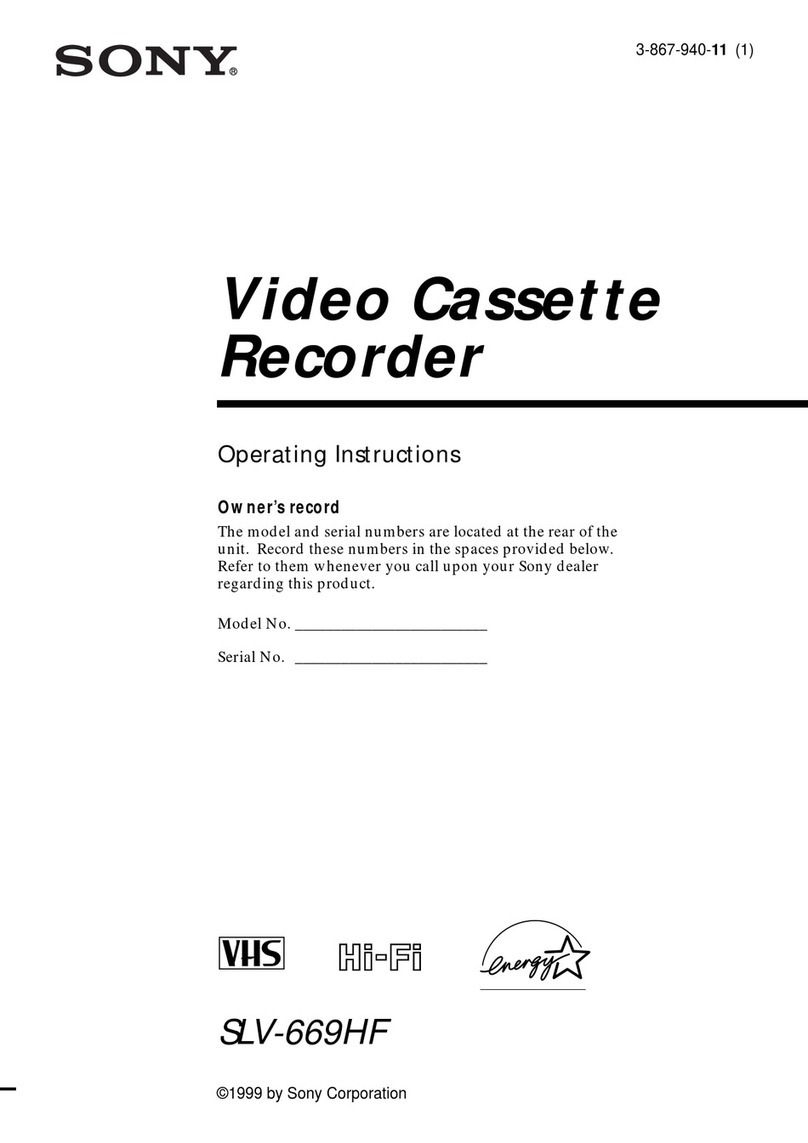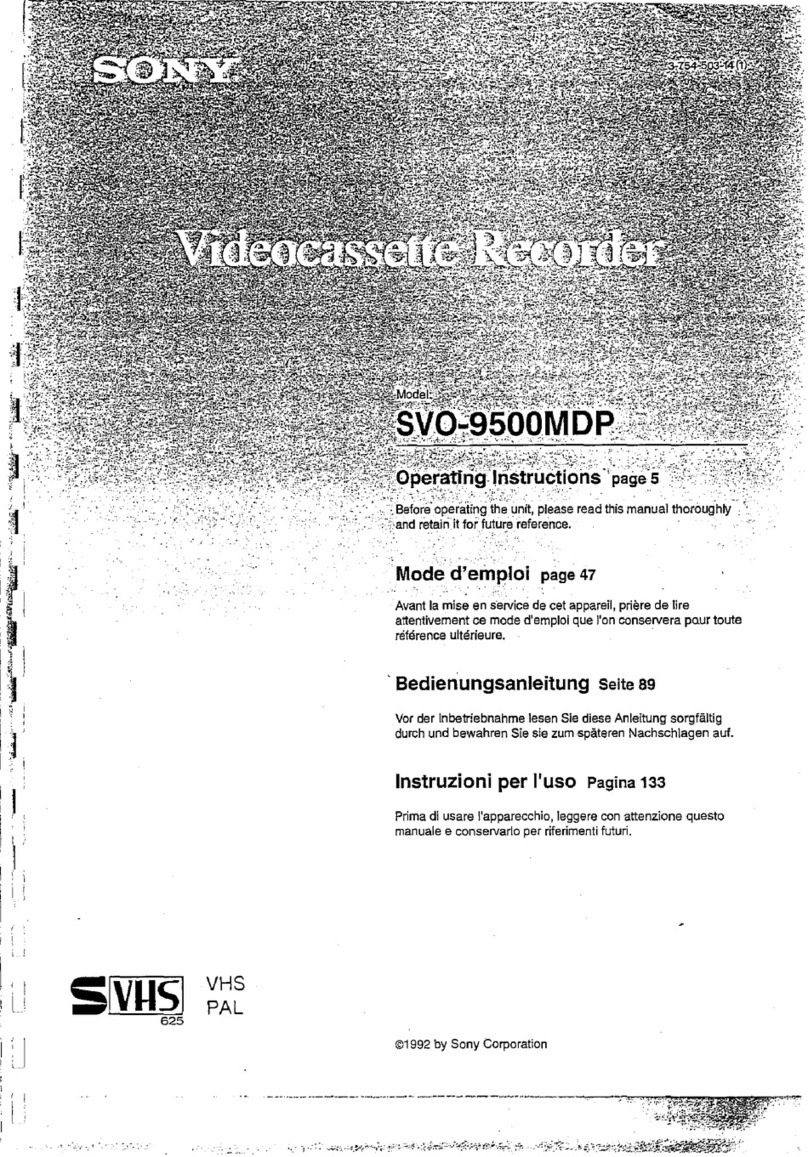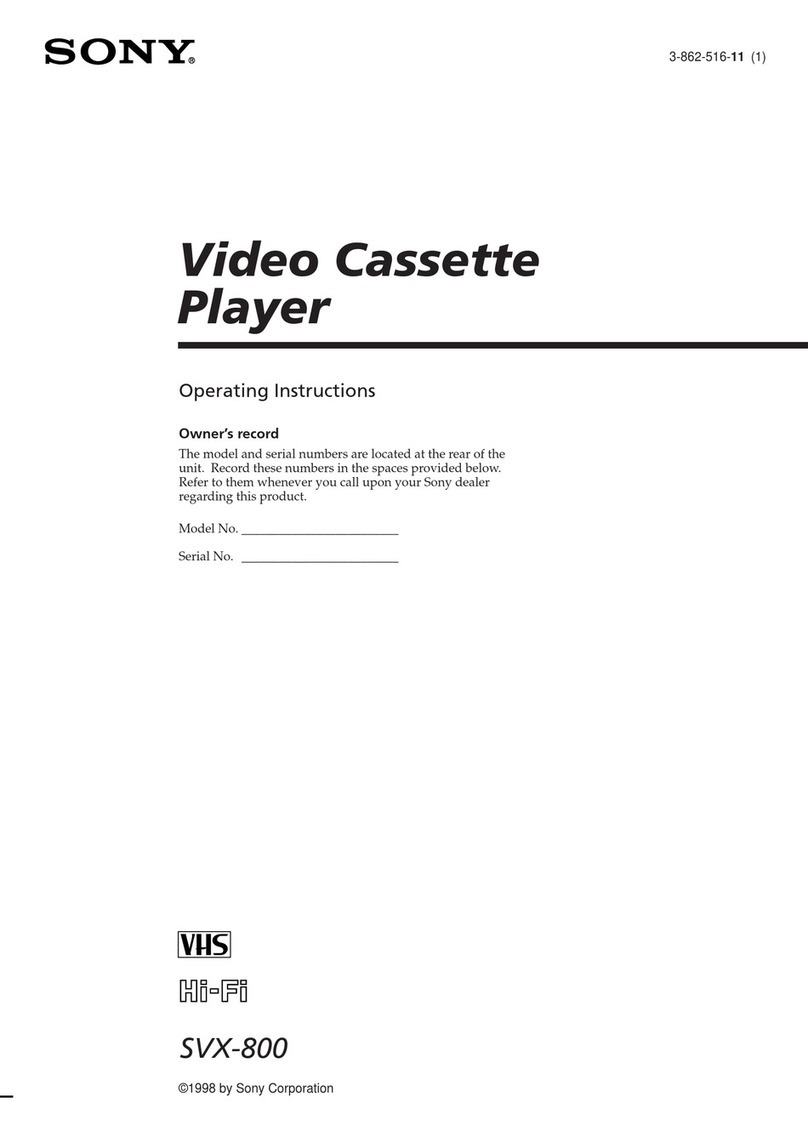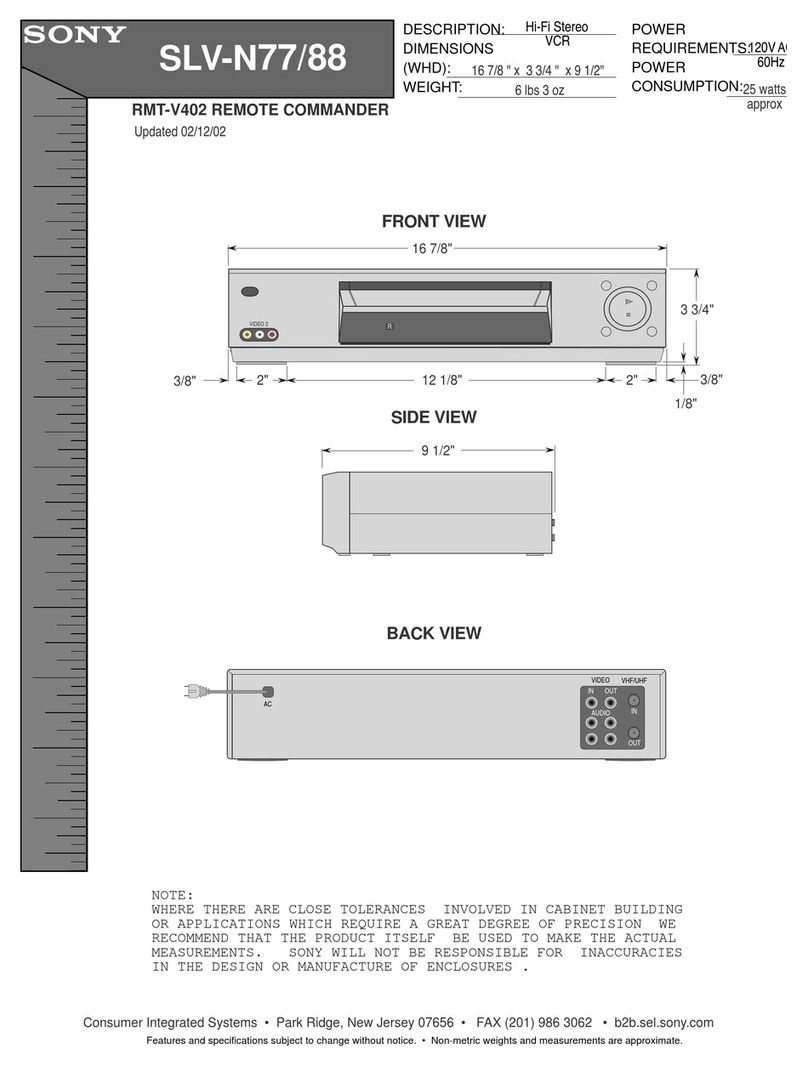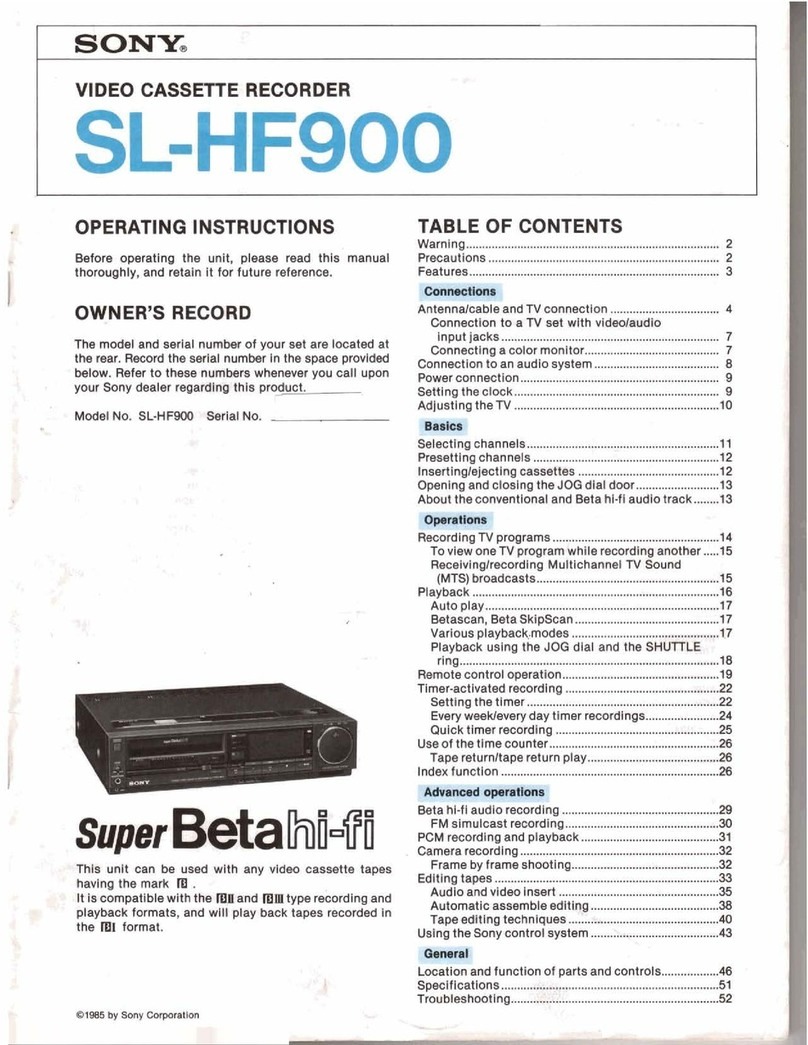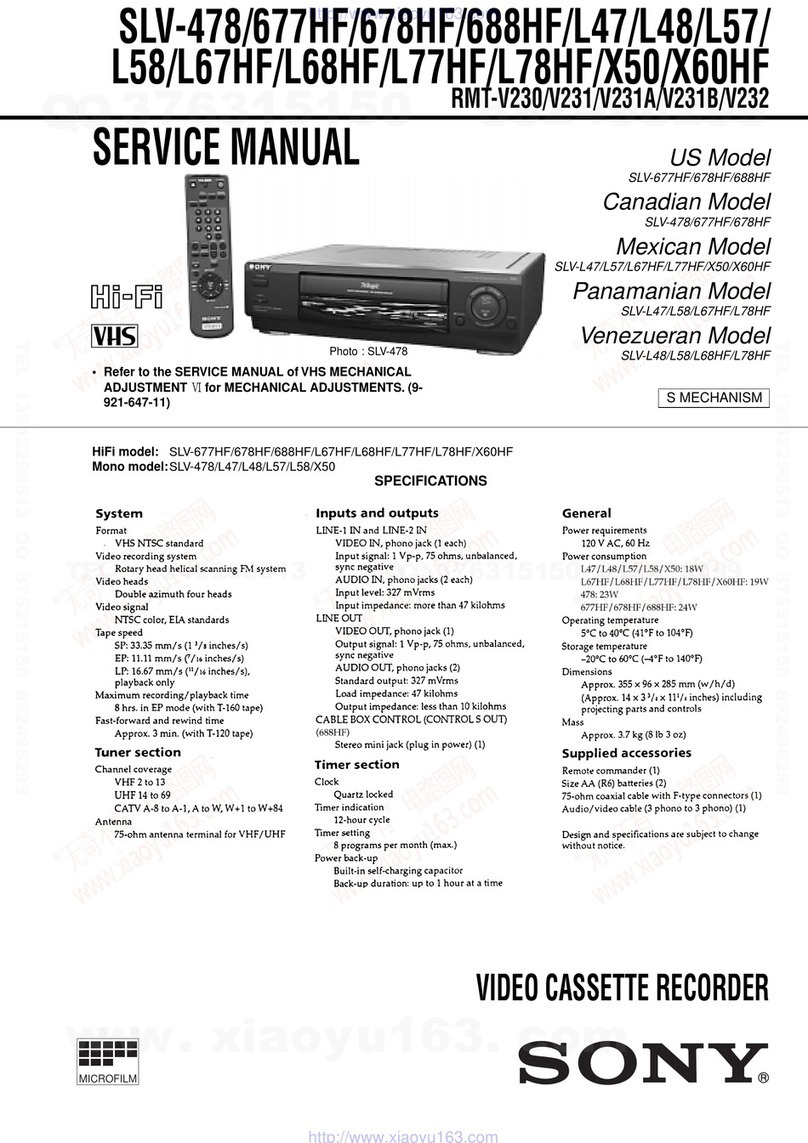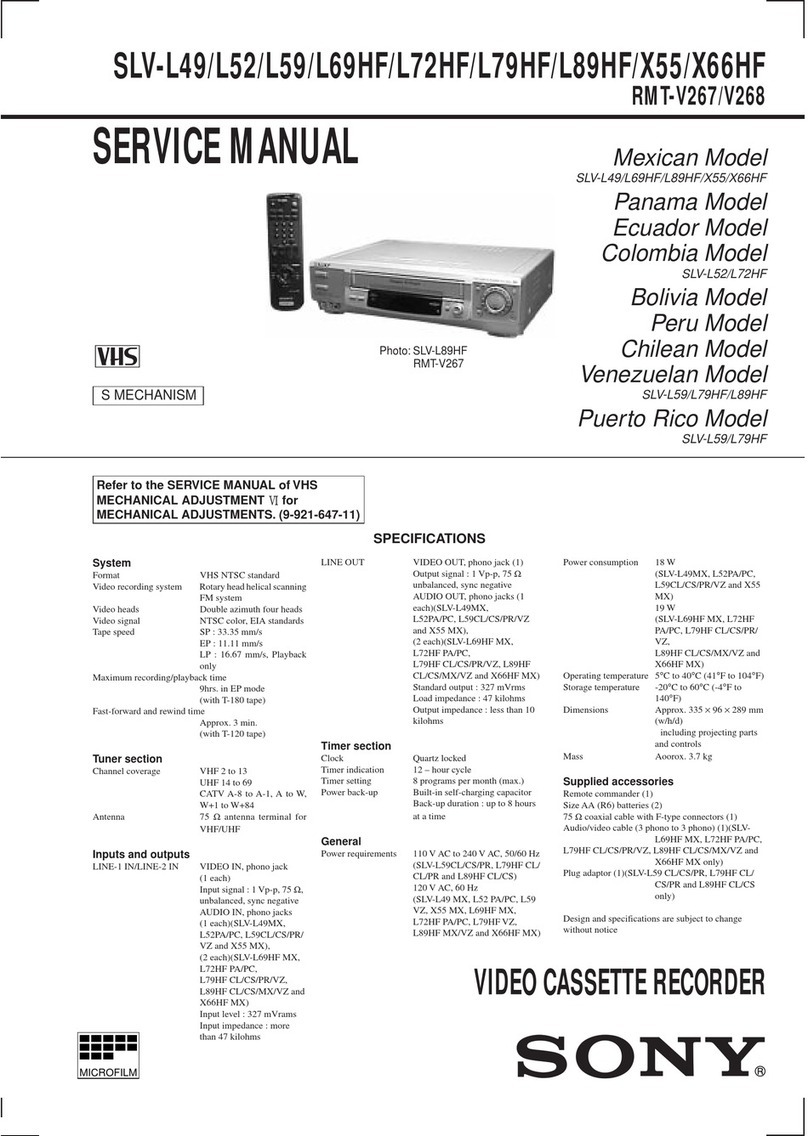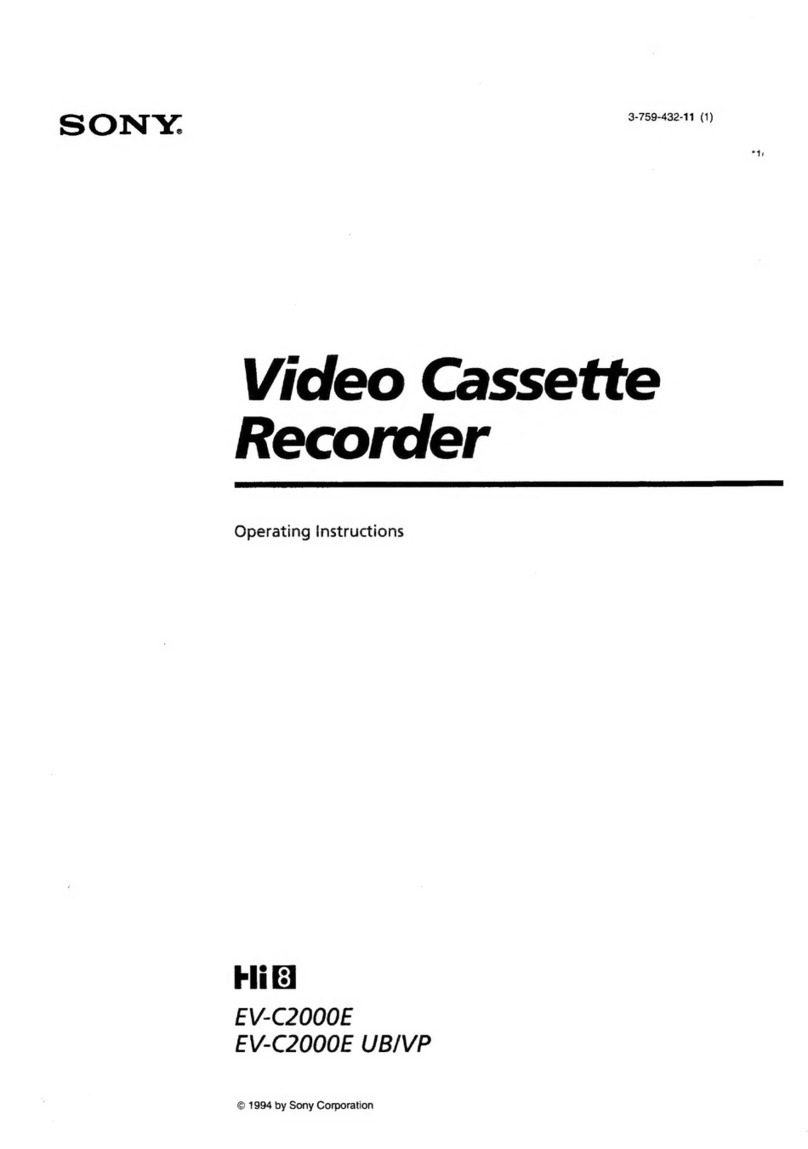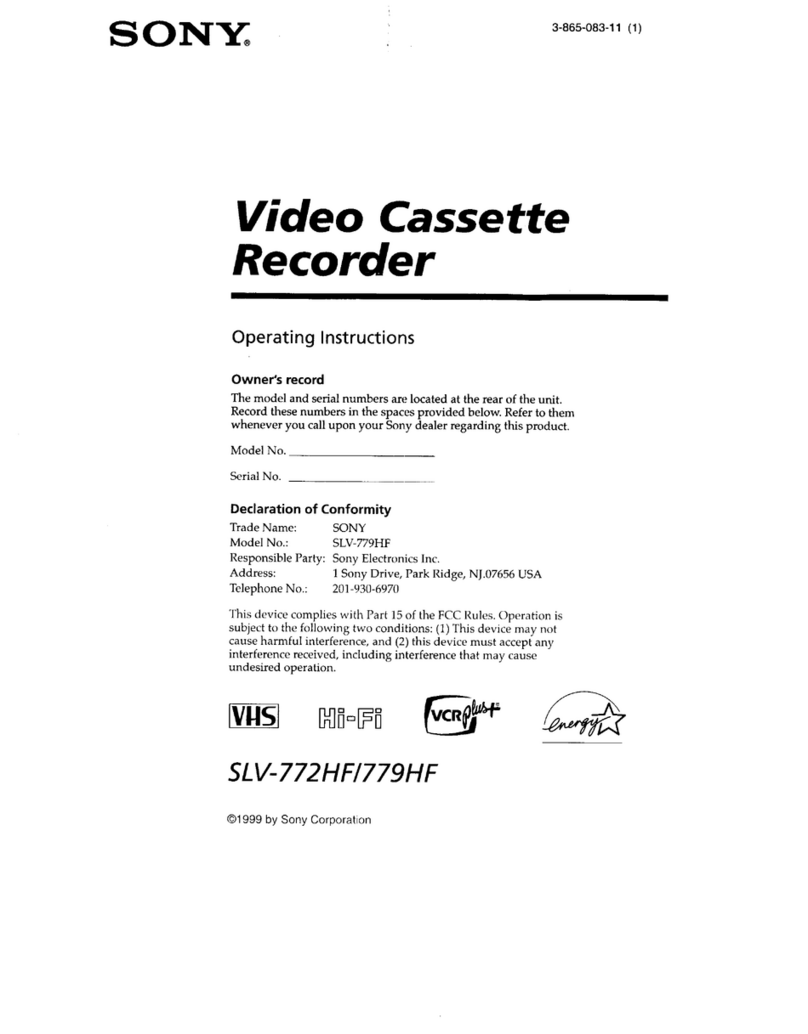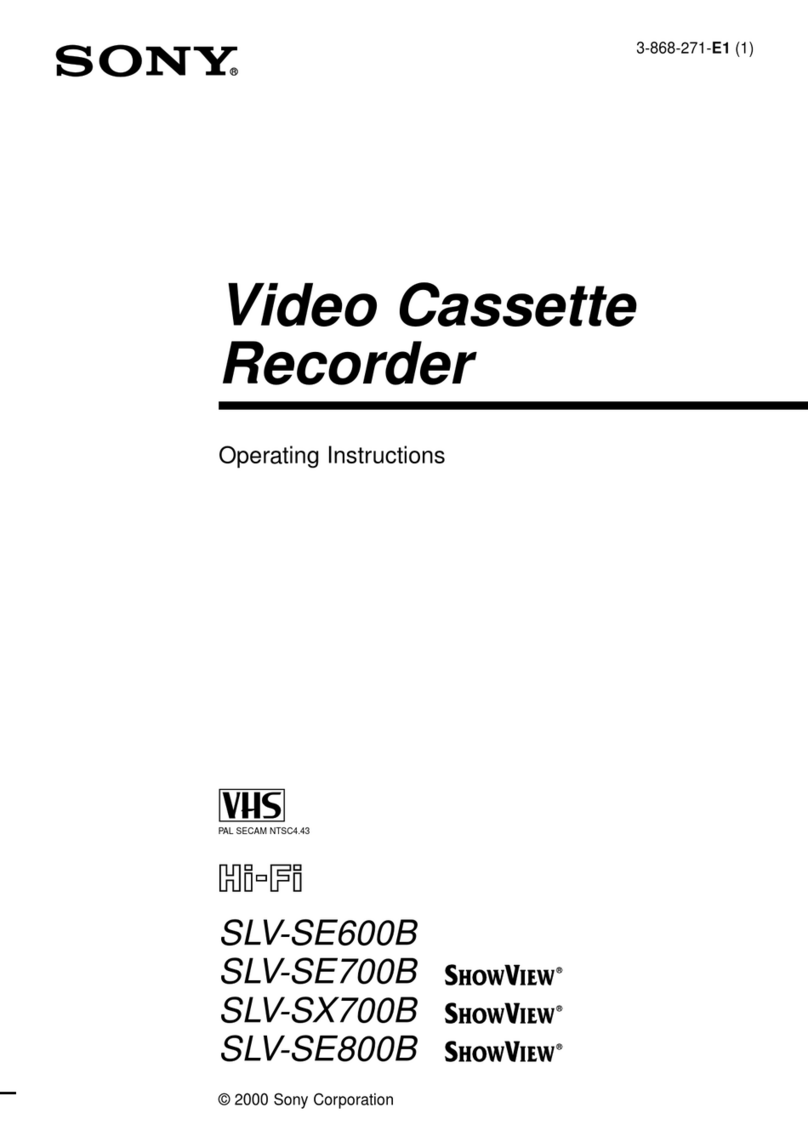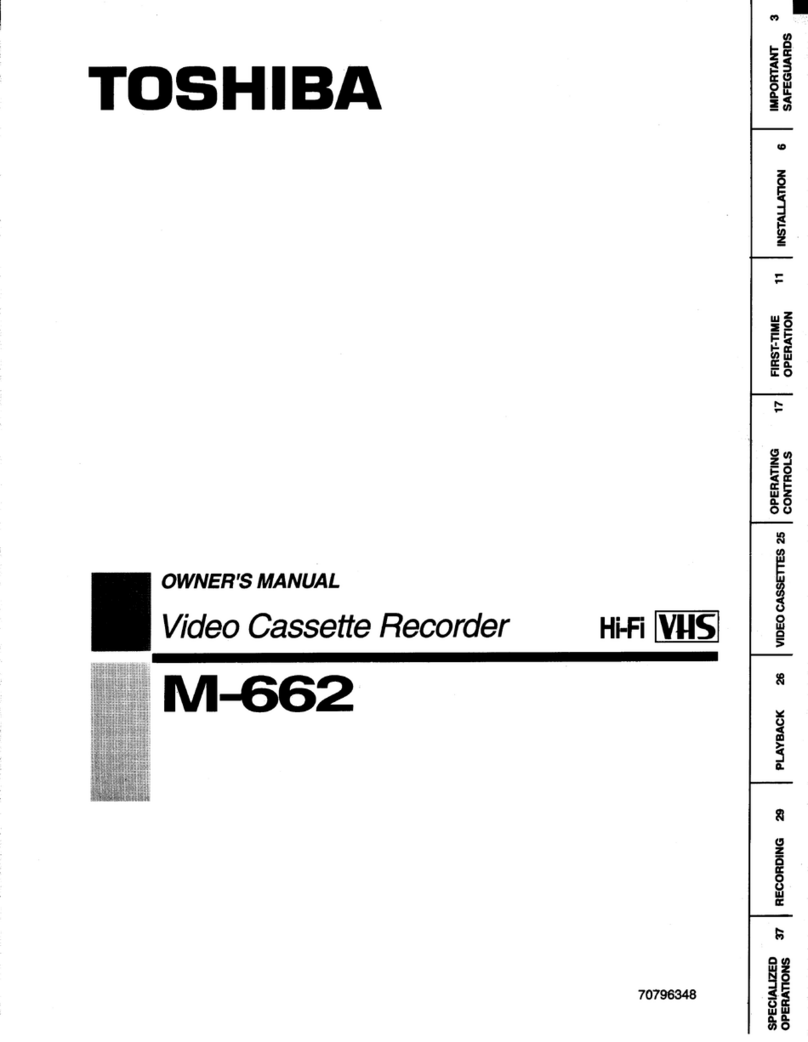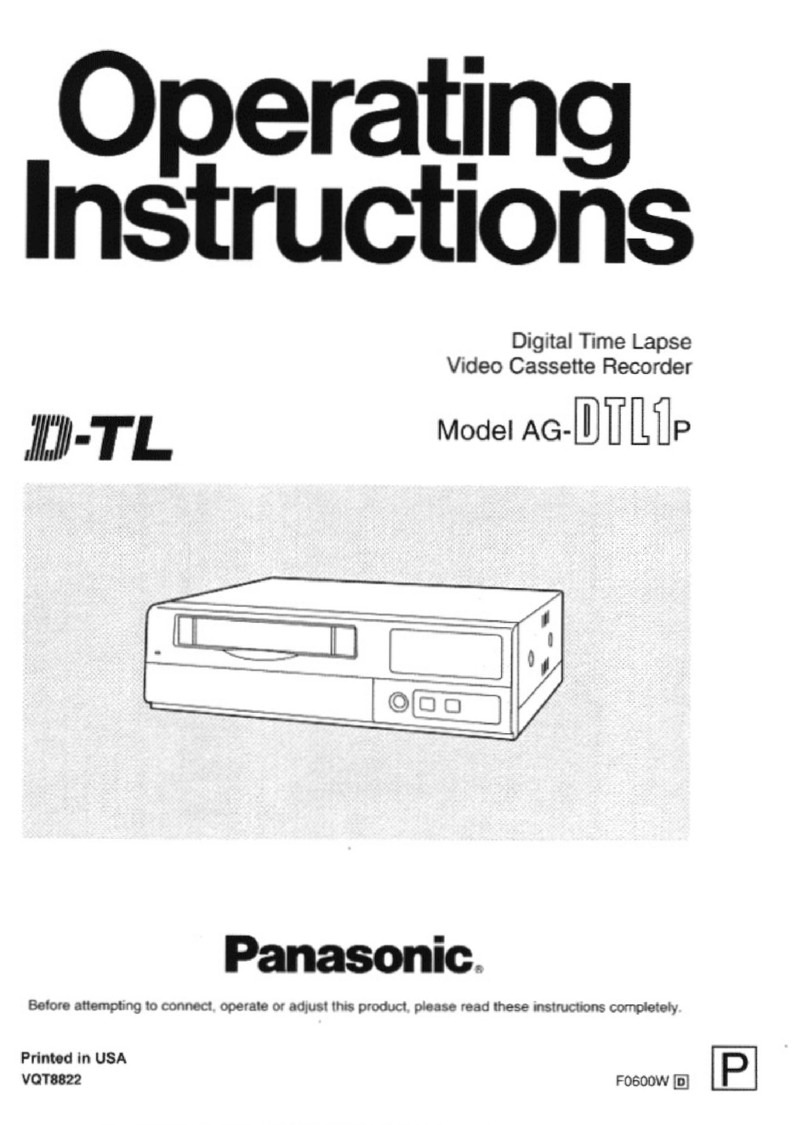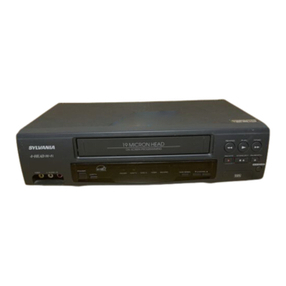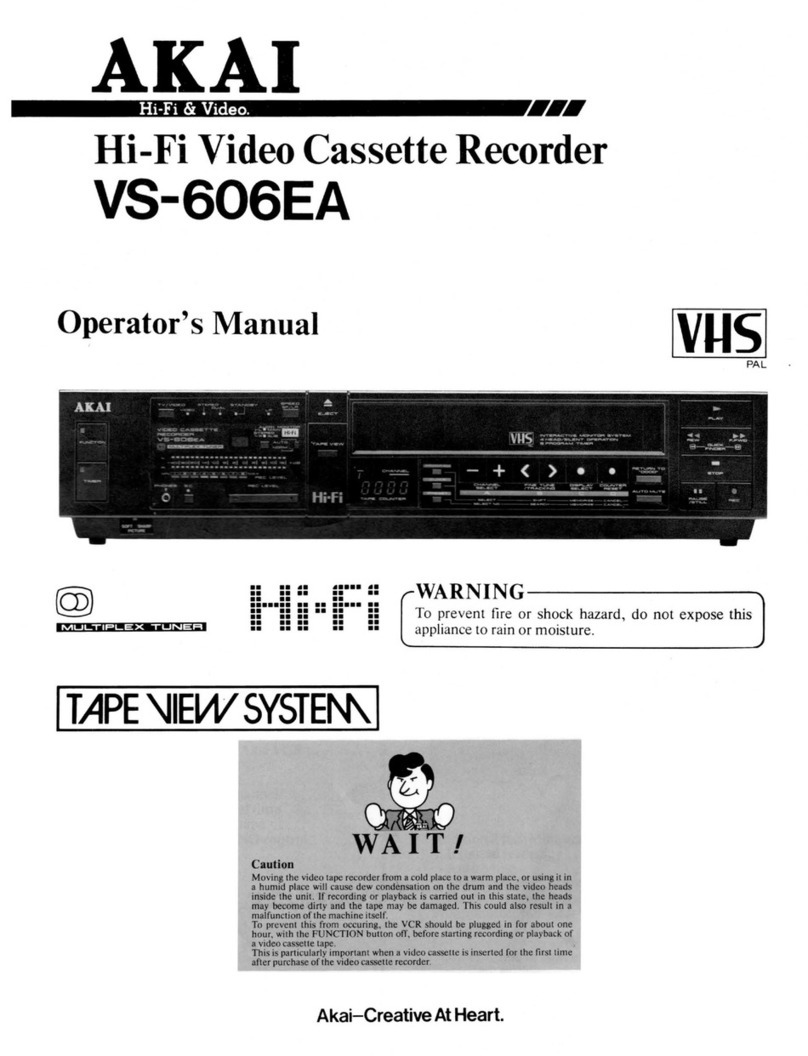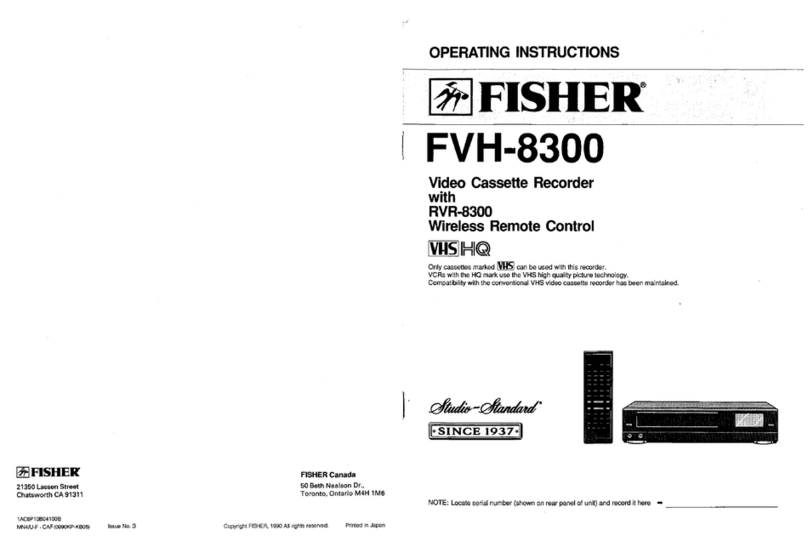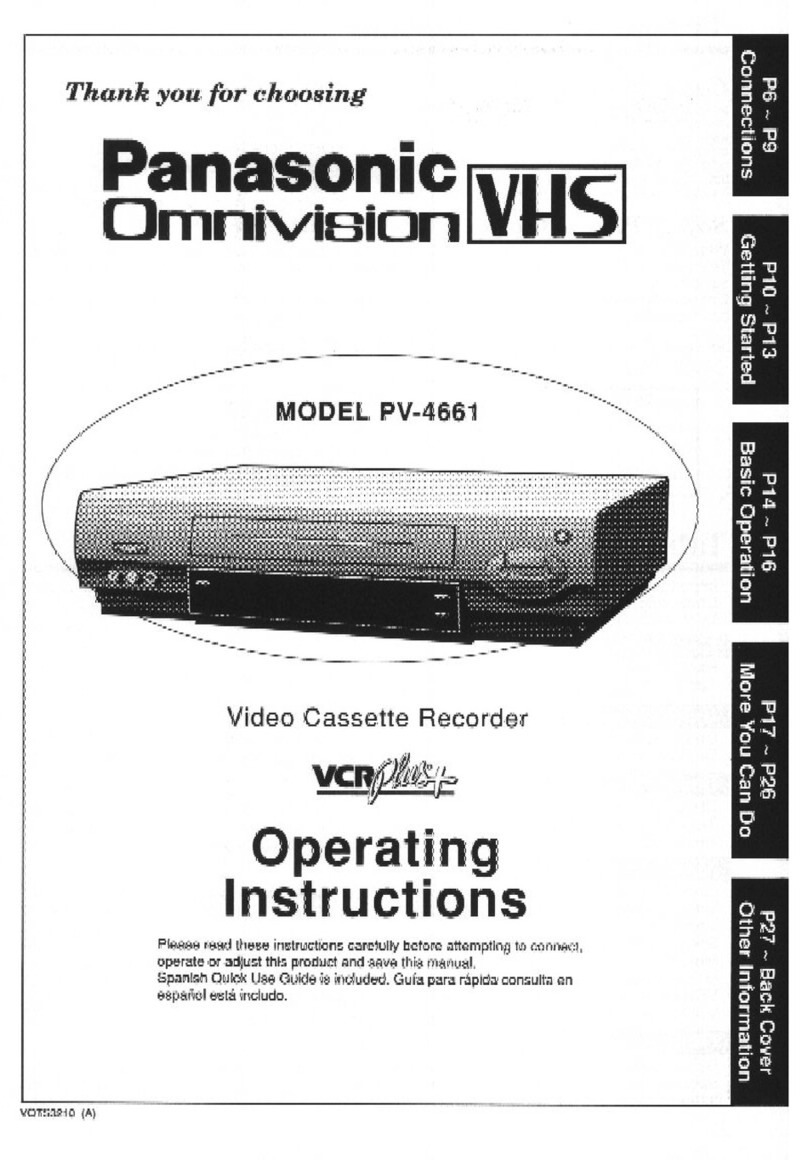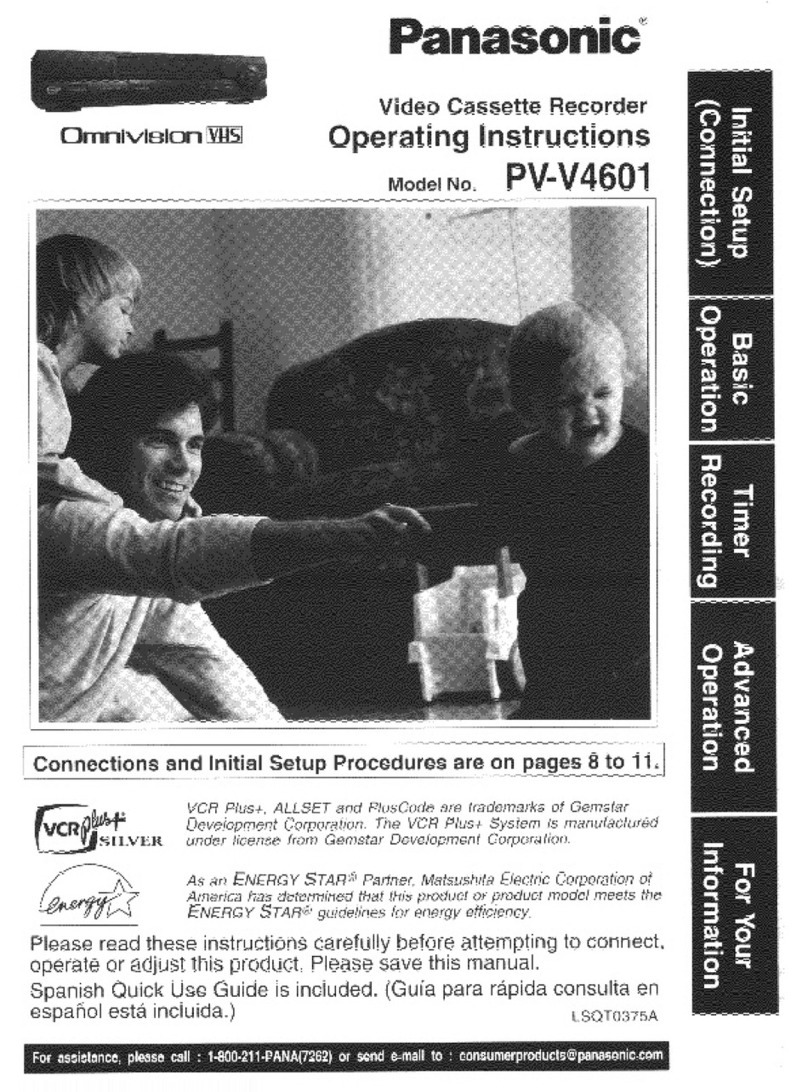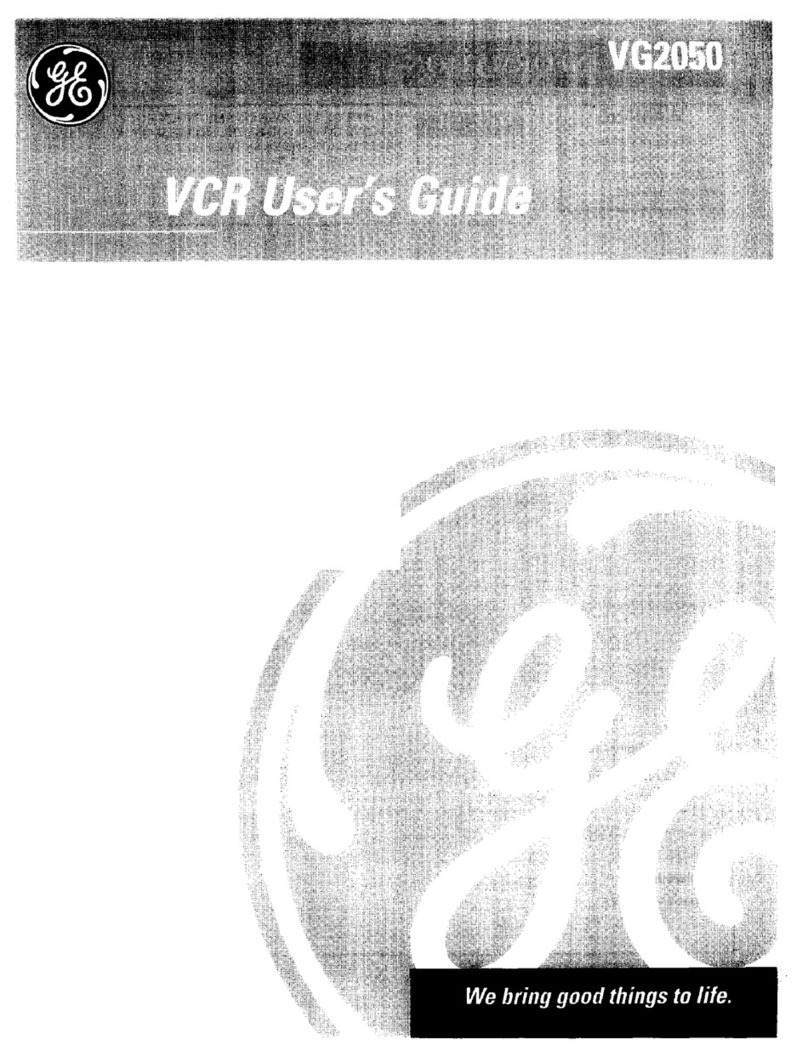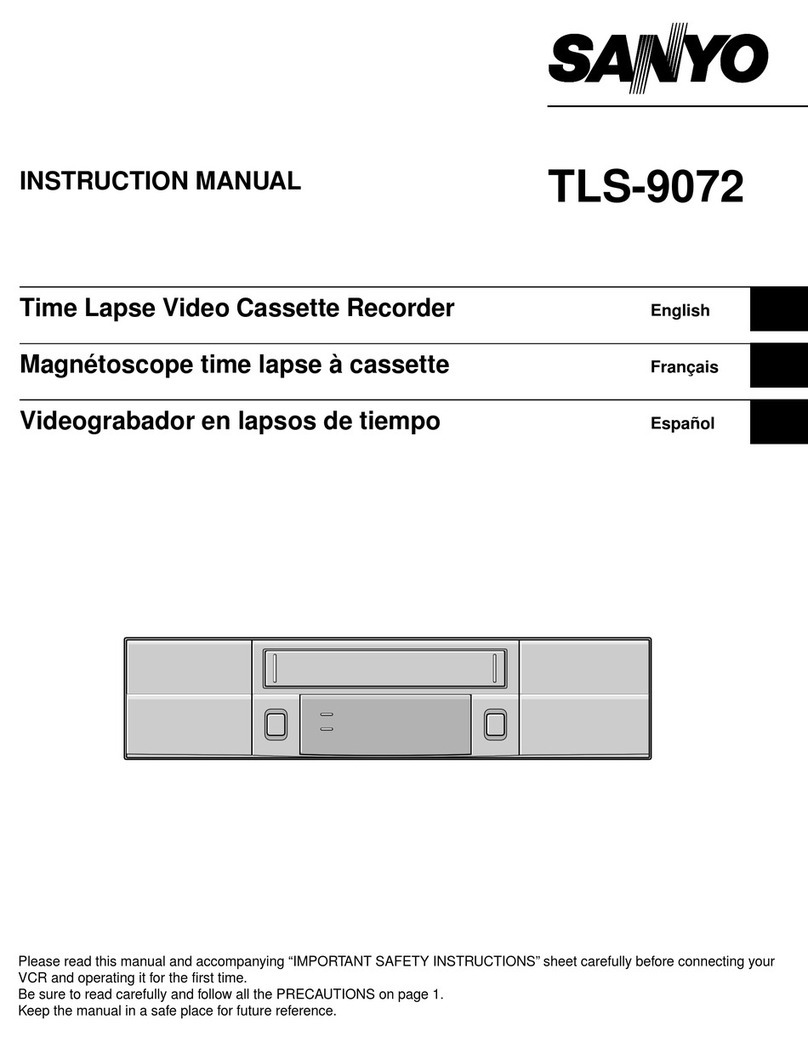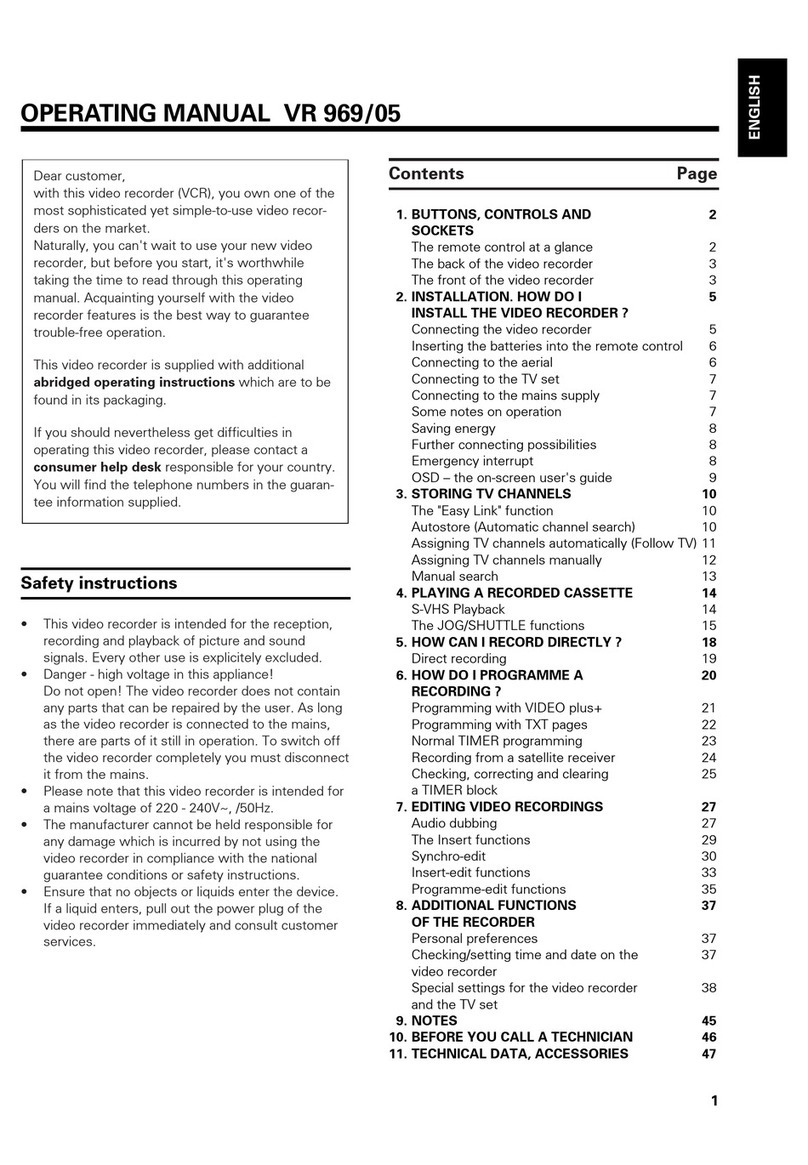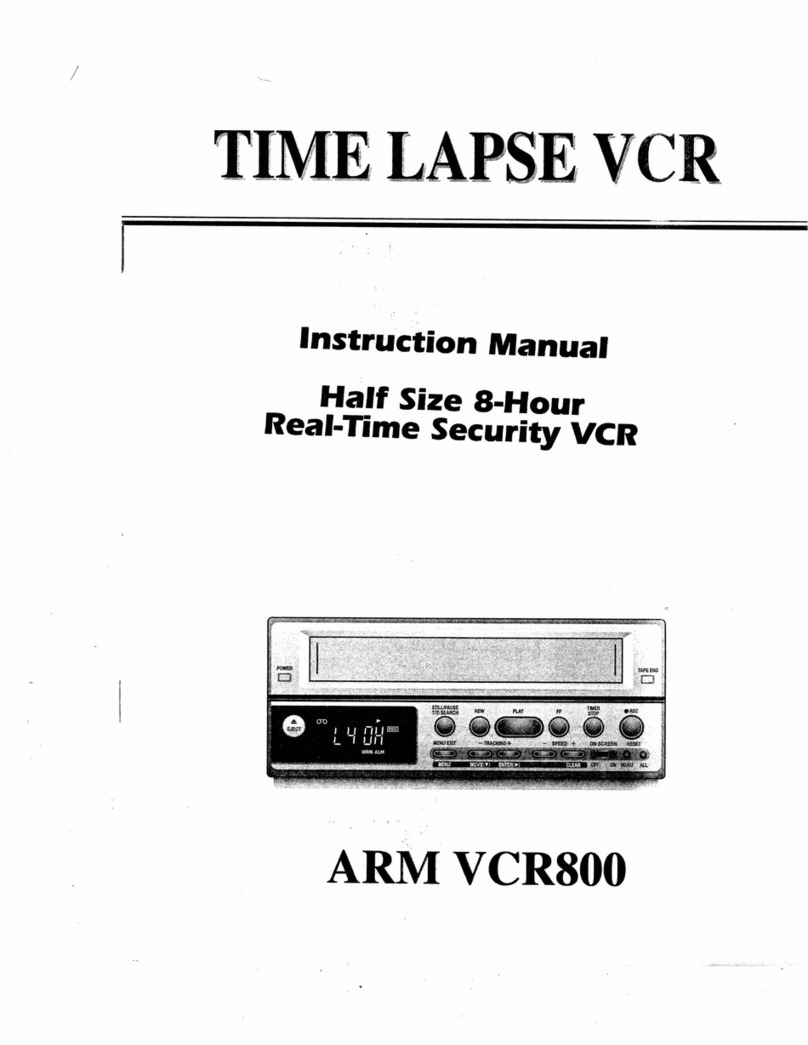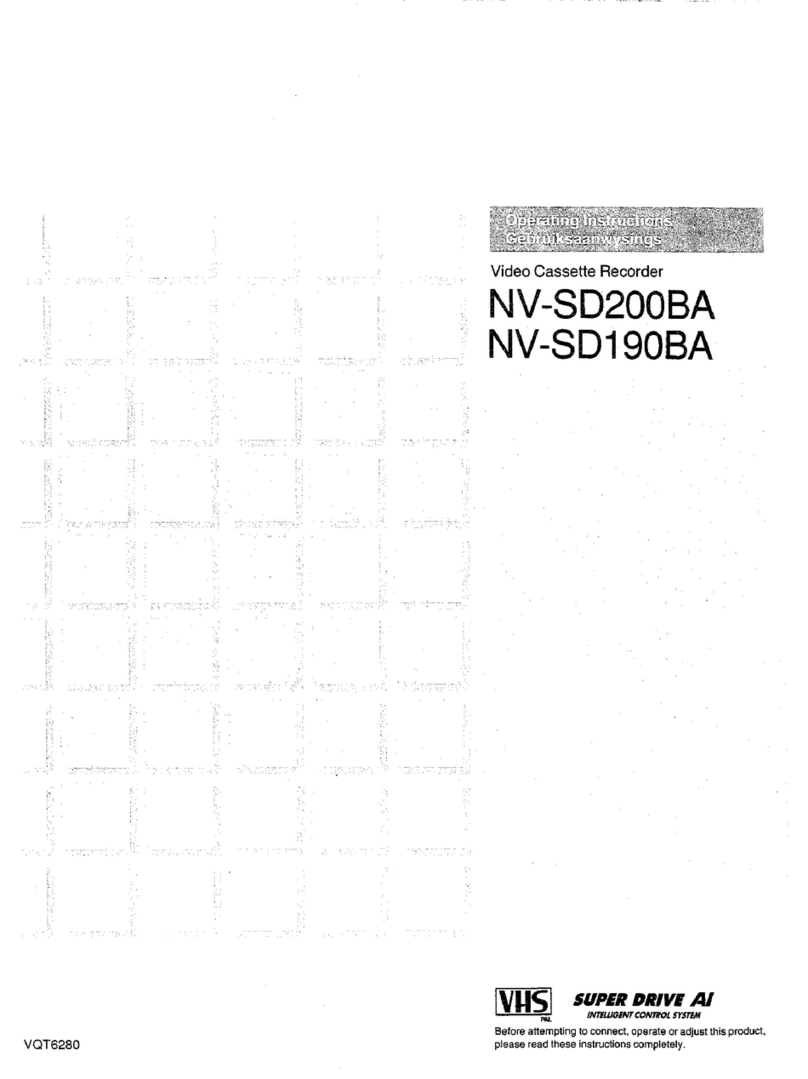
GOMOM
A
2h.
scscescsSsnnncscaceeciassCercsivadevastesdeecuesteteascsdinwscsstedtaveties
4
About
frame
codes
ww
4
PHO
CAUTIONS
scoscccccitescve
de
icnsccnecesesectecinsstucuadonteticenturterteonesctenss
5
New
recording/playback
system
(SP
system)
............
6
Functions
of
parts
and
controls
Front
panel
scicicevec
eta
ee
ee
als
8
Rear
panel
esses
asthe.
tes
ceases
enacts
cceshadean
ncanssuveecs
12
Connections
For
camera
recording
For
tape
CUDDING
........csssccsesssessscscsnsesneesneessscaeesensenteereaes
For
connecting
a
video
monitor
with
an
8-pin
Video
Cable
.......esesceeceeeeeeees
ws
sdtauaglaadescauscensacasceceecewcests
15
For
connecting
a
video
monitor
not
having
an
B-PIN
VTR
COMMECEON
oes
eeseseeseeceetseeeeeoneeeeenanseeenens
15
For
connecting
a
TV
receiver
..............:+
a
16
For
connecting
a
stereo
system
.............
.
16
For
microphone
recording
..........sscscsesecsceeeee
wn
(7
For
sound
monitoring
through
headphones
..........
17
POWET
CONNECTION
.......ccssscecssessecsnenessecesessccteneceeatatareerenes
17
On
video
cassettes
TO
INSert
A
CASSEHES
on...
sesssceeseeeeseeseeeeteseeeeteeetenesenses
18
To
insert
a
small-size
(KSP-S
or
KCS)
cassette
.....
18
TO
FEMOVE
A
CASSEHHE
«......aeeeeeeeeceecsesceesececeecetoeseenenteneees
18
Recording
PLEPATALIONS
cseccscsacssusectssstnistsesssataceatsiesvssnsceacevtiavenvedscaste
Operation
......sssssscccsssersossnescseessnsesssesseeeesseesnees
To
monitor
the
sound
being
recorded
.......
TO
GUD
QUGIO
..0.....eesescnessneecnteretentecneresesonseseensenes
To
record
sound
on
the
middle
of
a
tape
wate
EFASHING)
wvsccnenseniscssosicnssdisnssccsisesaiensscasctensisstcesdestecasactcavecesiee
Playback
Preparations
Operation
..........ce
Search
operation
Programmed
Operation...
Playback
using
a
time
base
corrector
Timer
recording/PlayDack
........sssscsesssessseseeseeees
Connections
iki
Operation
tscenic5,
seni
eaten
To
view
a
playback
picture
on
a
TV
receiver
Installation
of
an
RF
MOCUuIator
......eseeeseseeeseeesees
34
Connections
we
4
OPS
AION
sos.
cscccesecosiscsccectniicecdtcccsnacesisnssrecousrtvedesbesstactseasees
35
Remote
control
operation
Using
a
remote
Control
UNIt
ose
eseesecteeesneenensnenees
36
Using
an
RX-353
or
RX-303
automatic
search
COMTPOD
UIE:
sc
crsceceaenccccccescscnectzateteasentatecttcaici
ie
deeucandeiaatay
37
Using
an
RX-707
automatic
search
control
unit
....
38
Connection
of
&
COMPUTET
ou...
eecececseseceseeeceeseeeeees
39
Rack
mounting
SPecifiCatiOns
2...
ecescsescesessestseesenestecetsseseessesesssenessaeseeeees
Troubleshooting
sie’
Video
NEA
CLEANING
..........esessectscessssteseeesecenseeereceeeeeees
42
Video
head
replaceMeNt
..........ccesssesssesessessesssneeees
4
